
JOURNAL OF THE INSTITUTE OF BREWING
metrics 2024
Pioneering Research for Beverage Excellence
Introduction
JOURNAL OF THE INSTITUTE OF BREWING, a premier publication in the field of Food Science, is dedicated to advancing the knowledge base of brewing practices and science. Published by the esteemed Institute of Brewing, this journal features a rich history since its inception in 1904, establishing a tradition of excellence and scholarly contributions in brewing research. With an impact factor reflective of its critical role—ranked in the 77th percentile among 389 journals in its category—and categorized as Q2 in Food Science for 2023, it serves as a vital platform for researchers, professionals, and students interested in fermentation science, brewing technology, and beverage innovation. The journal encompasses a variety of topics, including, but not limited to, yeast biology, brewing processes, and sensory evaluation, ensuring a comprehensive approach to the science behind brewing. While it offers limited open-access options, its rigorous peer-review process guarantees the quality and integrity of published research. Scholars and practitioners alike are encouraged to engage with the journal’s scholarly articles to stay abreast of the latest developments and breakthroughs in the brewing industry.
Metrics 2024
 0.45
0.45 2.40
2.40 2.30
2.30 65
65Metrics History
Rank 2024
Scopus
IF (Web Of Science)
JCI (Web Of Science)
Quartile History
Similar Journals

International Journal of Food Engineering
Connecting Experts to Drive Food Safety and QualityThe International Journal of Food Engineering, published by WALTER DE GRUYTER GMBH, serves as a pivotal platform for cutting-edge research in the field of food engineering. With an ISSN of 2194-5764 and an E-ISSN of 1556-3758, this journal focuses on innovative technologies, production processes, and quality control within food systems. Located in Germany, the journal has gained notable recognition, as reflected in its Scopus rankings, which place it within the 61st percentile in miscellaneous engineering and the 50th percentile in food science. Although it operates under a traditional access model, the journal's striking category quartiles signify its importance: achieving Q2 in Engineering and Q3 in both Biotechnology and Food Science in 2023. By fostering interdisciplinary research, the International Journal of Food Engineering aims to connect scientists, engineers, and industry professionals, ultimately contributing to advancements in food safety, sustainability, and nutrition. Join a vibrant community of experts driving innovation and addressing global food challenges through your contributions to this esteemed journal.

JOURNAL OF FOOD SCIENCE AND TECHNOLOGY-MYSORE
Pioneering Research for a Sustainable Food FutureJOURNAL OF FOOD SCIENCE AND TECHNOLOGY-MYSORE, published by SPRINGER INDIA, is a distinguished peer-reviewed journal that has been contributing to the ever-evolving field of food science since its inception in 1974. With an ISSN of 0022-1155 and E-ISSN 0975-8402, this journal holds a commendable position in the Q2 category for Food Science, as per the 2023 metrics, and ranks #58 out of 389 in Scopus's Agricultural and Biological Sciences sector, achieving an impressive 85th percentile. The journal publishes high-quality research articles, reviews, and case studies that cover a wide array of topics, from food preservation to innovative technologies in food processing. Although it is not an open-access journal, it endeavors to disseminate essential knowledge and research strategies that advance food science and benefit both industry professionals and academia. The geographical reach of the journal, alongside its rigorous editorial standards, solidifies its stature as a pivotal resource for researchers, professionals, and students dedicated to the enhancement of food science practices and technologies.
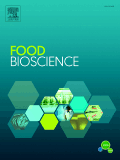
Food Bioscience
Advancing the Frontiers of Food Science and BiosciencesFood Bioscience is a leading peer-reviewed journal published by Elsevier, dedicated to advancing the understanding of the complex interplay between food science and biosciences. With an impressive Impact Factor that places it in the Q1 and Q2 quartiles for Food Science and Biochemistry respectively, the journal consistently ranks among the top publications in its field, reflected in its Scopus rankings (Rank #83/389 in Food Science and Rank #175/438 in Biochemistry). Since its inception in 2013, Food Bioscience has fostered a multidisciplinary approach, bridging gaps between research in agricultural, biological, and food sciences, thus encouraging innovative solutions to the pressing challenges facing the global food supply chain. Although it currently operates under a subscription model, the journal is committed to disseminating high-quality research, making significant contributions to both academic scholarship and industry practices. Researchers, professionals, and students alike are invited to explore the wealth of knowledge contained within its pages as it plays a pivotal role in shaping the future of food bioscience.

JOURNAL OF THE JAPANESE SOCIETY FOR FOOD SCIENCE AND TECHNOLOGY-NIPPON SHOKUHIN KAGAKU KOGAKU KAISHI
Cultivating Collaboration in Food Science ResearchWelcome to the JOURNAL OF THE JAPANESE SOCIETY FOR FOOD SCIENCE AND TECHNOLOGY-NIPPON SHOKUHIN KAGAKU KOGAKU KAISHI, a pivotal platform for the advancement of food science and technology. Published by the Japan Society for Food Science and Technology, this esteemed journal has been contributing to the field since 1995 and continues to publish innovative research and reviews that foster knowledge and collaboration among researchers, professionals, and students interested in food science. Although it currently holds a Q4 ranking within the Food Science category, the journal's commitment to disseminating valuable insights showcases its potential as a resource for emerging trends and applications in food technology. While it does not offer open access options, it maintains a rigorous peer-review process to ensure the quality of its content. As this journal progresses into its convergence years through 2024, it remains an essential resource for those passionate about exploring the intersections of food science and technology in Japan and beyond.
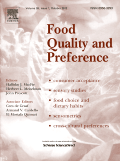
Food Quality and Preference
Transforming Knowledge in Food Science and Consumer InsightsFood Quality and Preference is a leading journal in the fields of food science and nutrition, published by ELSEVIER SCI LTD. With a notable impact factor and ranking in the Q1 quartile for both food science and nutrition and dietetics in 2023, this journal consistently publishes high-quality research that explores the multifaceted aspects of food preferences, sensory evaluation, and consumer behavior. The journal provides a critical platform for researchers, professionals, and students engaged in the study of food quality, aiming to enhance our understanding of how sensory properties, nutritional value, and consumer choices intersect. Its commitment to disseminating cutting-edge findings makes it an essential resource for advancing the field and informing practice in both academic and industry settings. Access to the journal is via subscription, allowing for robust engagement with pioneering research that shapes current and future practices in food-related studies.
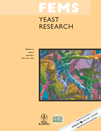
FEMS YEAST RESEARCH
Illuminating the World of Yeast ResearchFEMS Yeast Research, published by Oxford University Press, is a leading academic journal dedicated to the study of yeast biology, focusing on various aspects such as physiology, genetics, and biotechnology applications. With an ISSN of 1567-1356 and an E-ISSN of 1567-1364, this journal serves as a vital resource for researchers, professionals, and students alike, fostering advancements in the field of applied microbiology and biotechnology. Recognized for its significant contributions, it holds a 2023 Q2 ranking in both Applied Microbiology and Biotechnology and Medicine (miscellaneous), reflecting its influence within the scientific community. Operating from its base in the United Kingdom, FEMS Yeast Research spans over two decades, with content converging from 2001 to 2024, and continues to disseminate innovative findings that underpin both basic research and practical applications. Researchers can explore cutting-edge studies, engage with expert opinions, and contribute to a growing knowledge base in yeast research, making this journal an indispensable tool for scientific inquiry and discovery in the microbiological landscape.
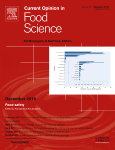
Current Opinion in Food Science
Unveiling the Latest Breakthroughs in Food ScienceCurrent Opinion in Food Science is a premier peer-reviewed journal published by ELSEVIER SCI LTD that focuses on the latest advancements and research in the domain of food science and technology. With its ISSN 2214-7993 and E-ISSN 2214-8000, this journal serves as a critical platform for researchers and professionals to share insights and opinions on emerging trends, innovations, and challenges faced in food science. The journal enjoys an impressive impact factor and ranks in the first quartile (Q1) in both Applied Microbiology and Biotechnology and Food Science, symbolizing its influence and reputation in the field. It is strategically located in the Netherlands and conducts its academic dialogue with a broad scope that includes essential topics in food safety, nutrition, and sustainable practices. Operating from 2015 to 2024, the journal has established itself as a critical resource for the global academic community, boasting excellent Scopus rankings—#9 out of 389 in Food Science and #6 out of 127 in Applied Microbiology and Biotechnology—indicating its high relevance and impact. Readers can look forward to insightful articles and comprehensive reviews that bridge the gap between fundamental research and practical application in the ever-evolving food science landscape.
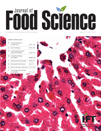
JOURNAL OF FOOD SCIENCE
Uncovering the Secrets of Food Science ExcellenceJOURNAL OF FOOD SCIENCE, published by Wiley, is a premier journal dedicated to advancing the field of food science, bridging the gap between fundamental research and practical application. With an impressive impact factor reflecting its authoritative status, the journal is ranked in the Q1 quartile for Food Science in 2023 and boasts a Scopus ranking of #71 out of 389, placing it in the 81st percentile within Agricultural and Biological Sciences. First launched in 1936, the journal continues to serve as an essential platform for researchers, professionals, and students to disseminate innovative studies and reviews that address critical issues in food quality, safety, and technology. While not currently offering open access, its rigorous peer-review process ensures the dissemination of high-quality and impactful research. Researchers engaged in the vital disciplines of food science will find this journal indispensable for keeping abreast of cutting-edge developments in the field.
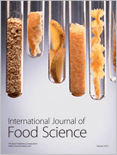
International Journal of Food Science
Fostering Collaboration in Food Science ResearchThe International Journal of Food Science, published by HINDAWI LTD, stands as a crucial platform for advancing knowledge within the realm of food science. Established in 2013, this Open Access journal based in Egypt has garnered significant recognition, achieving an impressive Q2 classification in the 2023 Food Science category, which reflects its commitment to quality and impactful research. With a Scopus rank of #88 out of 389 in Agricultural and Biological Sciences and placing in the 77th percentile, this journal serves as an essential resource for researchers, professionals, and students dedicated to innovative developments and scientific exploration in food science. The journal not only provides unrestricted access to valuable research but also aims to foster collaboration and dissemination of knowledge on critical issues affecting food safety, nutrition, and technology. For those looking to keep abreast of the latest advancements, the International Journal of Food Science is certainly an indispensable addition to their academic pursuits.

Ciencia e Tecnica Vitivinicola
Pioneering Open Access Research in Viticulture and Food ScienceCiencia e Tecnica Vitivinicola is a premier open-access journal dedicated to the fields of Food Science and Horticulture, published by ESTACAO VITIVINICOLA NACIONAL in Portugal. Since its inception in 2008, this journal has provided a vital platform for researchers, professionals, and students focused on advancing the scientific study of viticulture and wine technology. With a significant commitment to open access since 2014, Ciencia e Tecnica Vitivinicola encourages widespread dissemination of knowledge, thus enhancing collaboration across the global scientific community. In 2023, it achieved a commendable ranking within the Q3 and Q2 quartiles for Food Science and Horticulture, respectively, demonstrating its impact and relevance in the academic landscape. Furthermore, with Scopus ranking it at 45 out of 115 in Horticulture and 208 out of 389 in Food Science, the journal continues to uphold high standards of scholarly excellence. With its scope encompassing innovative research, technological advancements, and practical applications in viticulture, Ciencia e Tecnica Vitivinicola is an indispensable resource for those passionate about the future of wine production and horticultural practices.